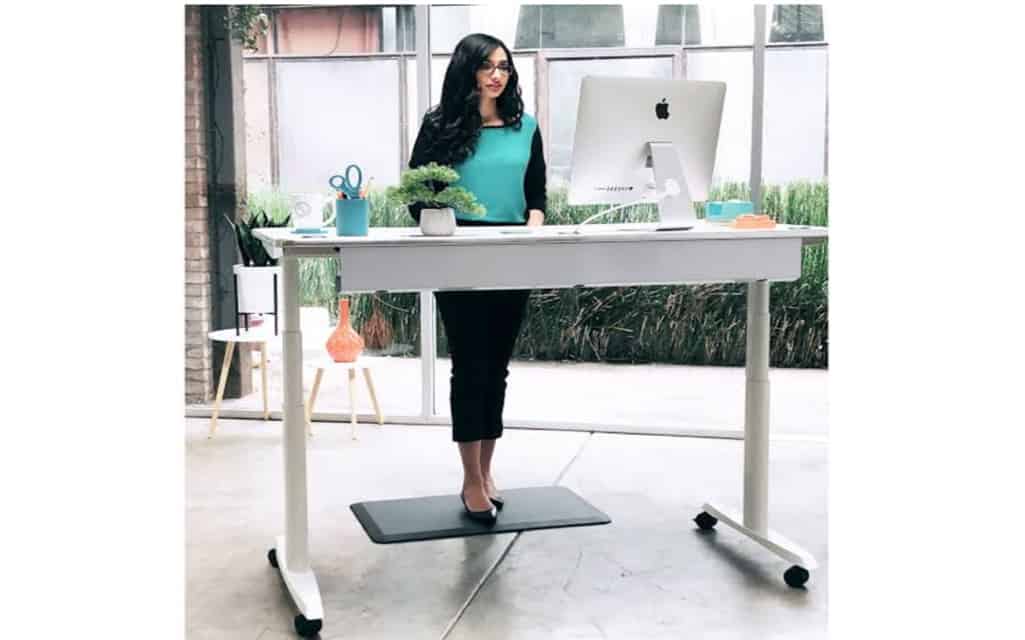A popular desk choice among office employees is the standing desk. Studies have shown that such desks will improve productivity as well as the health of the employee. While the option is a great one, without proper usage, you may have back pain or not receive the full benefits of the desk. Follow the tips below to maximize the benefits as well as avoid any negative effect.
Adjust the Standing Desk and Computer Screen Correctly
To be the most comfortable and to minimize injury at your desk, the height of the desk and the position of the computer screen must be considered. The standing desk should be at your elbow height. Make sure that when placing your elbows on your desk, they are at a 90-degree angle from the floor. Screen position measurements will vary from person to person. A general guideline is to have your screen from 20 to 28 inches from your face. Be sure your settings are comfortable before you get to work.
Install an Anti-Fatigue Mat
Because you will be standing for extended periods of time rather than sitting, you will need the right complements to your desk. This includes an anti-fatigue mat. With this type of mat, you will be more comfortable in the standing position. The mats will encourage subtle movements of the leg muscles which helps to improve blood flow and reduce discomfort. Such companies as First Mats offer anti-fatigue mats to help with lower back pain, leg problems and overall workplace comfort.
Consider Arm Supports
Another option you can consider for your desk is arm supports. Arm support is a padding that will be attached to the desk and will reduce pressure placed on the wrist when operating a computer mouse. Arm supports can help to reduce the risk of developing shoulder problems or neck issues.
Take a Break
Always remember to take a break, especially when standing at your desk. You need to take time to remove your eyes from the computer, clear your mind and stretch your muscles. Take a bathroom break or grab a quick drink in the breakroom to move about the office.
Keyboard and Mouse Positioning
Long hours at your standing desk can create a strain on your wrists. Along with the arm support, consider your wrist positioning. The position of the wrist will vary when you are standing versus when you are sitting. Protect your wrist when standing by keeping your keyboard and mouse on the same level.
Move from Standing to Sitting
We all know that sitting in one position too long is bad for your health. Standing all day is also not beneficial. Standing occupations have been known to lead to lower back pain. To avoid any health issues, take breaks to sit for a few minutes in-between standing. This will help to give your body a different positioning and keep your muscles from straining too much from one position.
These tips will keep you on the right track to a productive workday while at a standing desk. Add these points to your workday and see the difference in how you feel!



